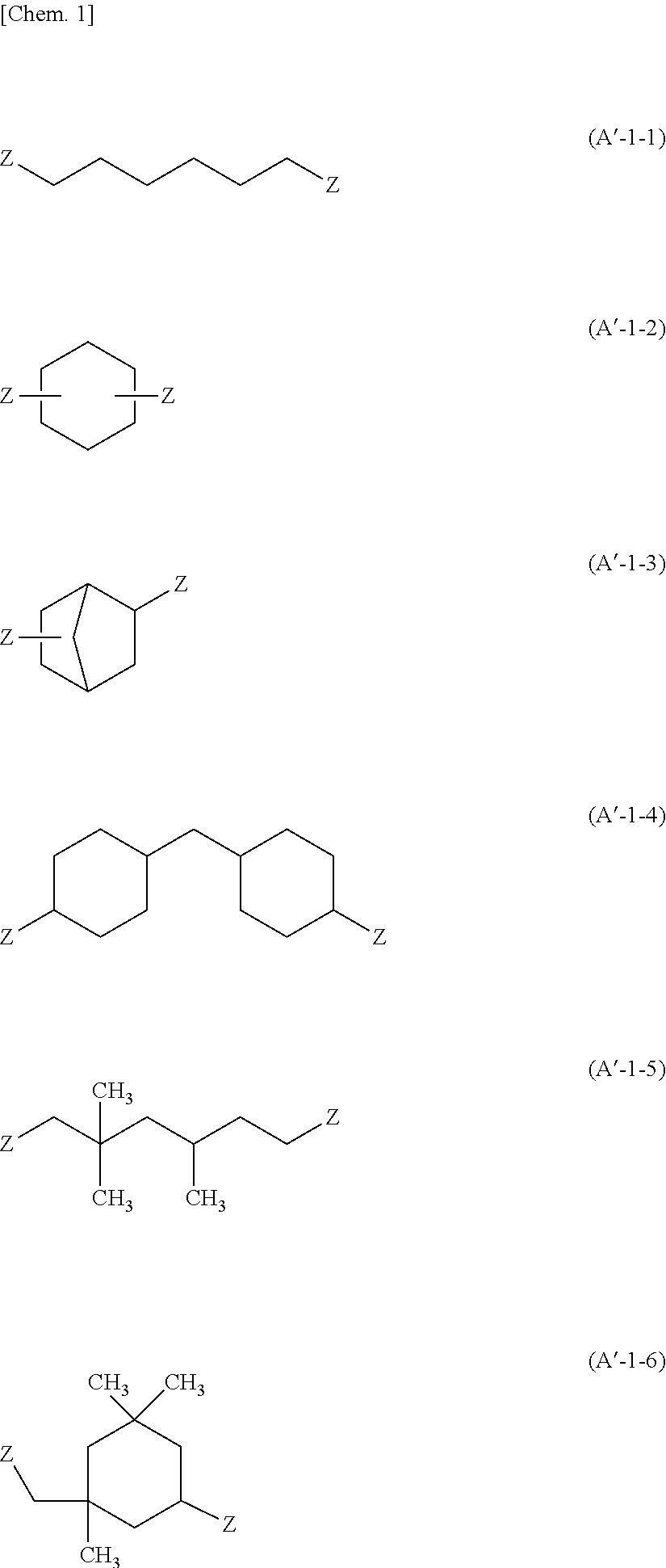Dental composition
a technology of dental composition and composition, applied in the field of dental composition, can solve the problems of inability to easily increase the content of filler, the surface cannot be polished to a sufficient gloss, and the viscosity of dental composite resin tends to increase, so as to achieve good flexibility, low polymerization shrinkage stress, and good handling
- Summary
- Abstract
- Description
- Claims
- Application Information
AI Technical Summary
Benefits of technology
Problems solved by technology
Method used
Image
Examples
production example 1
[0239]Production of SiO2—ZrO2-1
[0240]A solution of 32.5 g of zirconium oxynitrate in 325 g of distilled water was prepared. While stirring the solution, 425 g of a commercially available silica sol (SNOWTEX OL, manufactured by Nissan Chemical Corporation) was gradually added to obtain a mixture. A mixed powder obtained after freeze drying the mixture was placed in an alumina crucible, and was fired at 600° C. for 1 hour after being heated at a rate of temperature increase of 2° C. / min in an electric furnace. The resulting solid was pulverized for 240 minutes using a planetary ball mill (Classic Line P-6, Zirconia Ball, manufactured by Fritsch GmbH). For hydrophobization, the pulverized powder was surface treated with 3-methacryloyloxypropyltrimethoxysilane used in 10 parts by mass relative to 100 parts by mass of the powder. This produced an inorganic filler (SiO2—ZrO2-1).
[0241]The inorganic filler (SiO2—ZrO2-1) produced had an average particle diameter of 3.0 μm, and a specific sur...
production example 2
[0242]Production of SiO2—ZrO2-2
[0243]An inorganic filler (SiO2—ZrO2-2) was obtained following the method described in Production Example 1 of Patent Literature 1.
[0244]The inorganic filler (SiO2—ZrO2-2) produced had an average particle diameter of 6.3 μm, and a specific surface area of 182 m2 / g.
production example 3
[0245]Production of SiO2—Yb2O3
[0246]The water content in a commercially available silica-ytterbium oxide aqueous dispersion (SG-YBSO30SW manufactured by Sukgyung AT) was removed using an evaporator, and the resultant solid component was pulverized with a planetary ball mill (Classic Line P-6, Zirconia Ball, manufactured by Fritsch GmbH) for 180 minutes. The pulverized powder was fired for 1 hour in an electric furnace set at 800° C., and was pulverized for 180 minutes using the planetary ball mill. For hydrophobization, the powder was surface treated with 3-methacryloyloxypropyltrimethoxysilane used in 10 parts by mass relative to 100 parts by mass of the powder. This produced an inorganic filler (SiO2—Yb2O3). The inorganic filler (SiO2—Yb2O3) produced had an average particle diameter of 5.7 μm, and a specific surface area of 95.8 m2 / g.
PUM
| Property | Measurement | Unit |
|---|---|---|
| Length | aaaaa | aaaaa |
| Percent by mass | aaaaa | aaaaa |
| Percent by mass | aaaaa | aaaaa |
Abstract
Description
Claims
Application Information
 Login to View More
Login to View More - R&D
- Intellectual Property
- Life Sciences
- Materials
- Tech Scout
- Unparalleled Data Quality
- Higher Quality Content
- 60% Fewer Hallucinations
Browse by: Latest US Patents, China's latest patents, Technical Efficacy Thesaurus, Application Domain, Technology Topic, Popular Technical Reports.
© 2025 PatSnap. All rights reserved.Legal|Privacy policy|Modern Slavery Act Transparency Statement|Sitemap|About US| Contact US: help@patsnap.com


